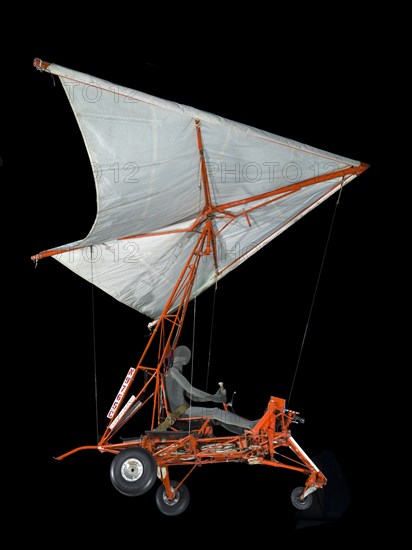
Sujet
Paraglider Research Vehicle (Paresev) 1-A, Gemini, 1960s. Creator: NASA.
Légende
From 1962 to 1964, NASA used the Paresev to develop the technology for landing the two-man Gemini capsule on land, instead of parachuting into the ocean, as had been done in Project Mercury. The astronauts would release an inflatable paraglider wing based on the work of Francis Rogallo, and maneuver to a runway or dry lake bed. Astronauts "Gus" Grissom and Neil Armstrong were among those who piloted the Paresev during several hundred flights at Edwards Air Force Base in California. The Paresev was towed by a ground vehicle or a small aircraft and released at an altitude between 5,000 and 12,000 feet. It was tested with three different wings; the 1-A is the first configuration. Before the paraglider concept could be fully developed for the Gemini program, NASA decided to stick with the proven technology of parachutes and water landing. NASA transferred the Paresev to the Smithsonian in 1968.
Crédit
Photo12/Heritage Images/Heritage Art
Notre référence
HRM21A88_114
Model release
NA
Property release
NA
Licence
Droits gérés
Format disponible
146,7Mo (2,8Mo) / 52,5cm x 70,0cm / 6200 x 8272 (300dpi)